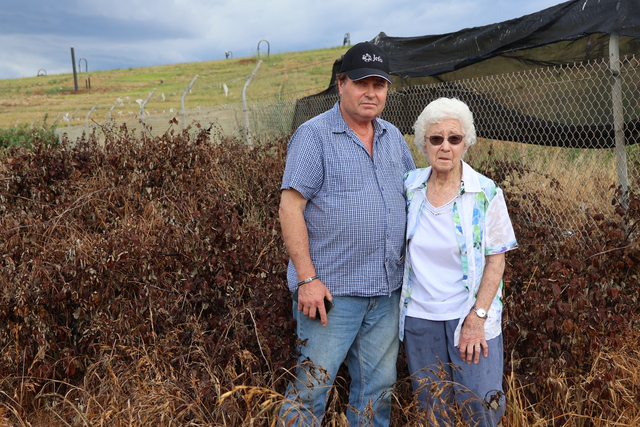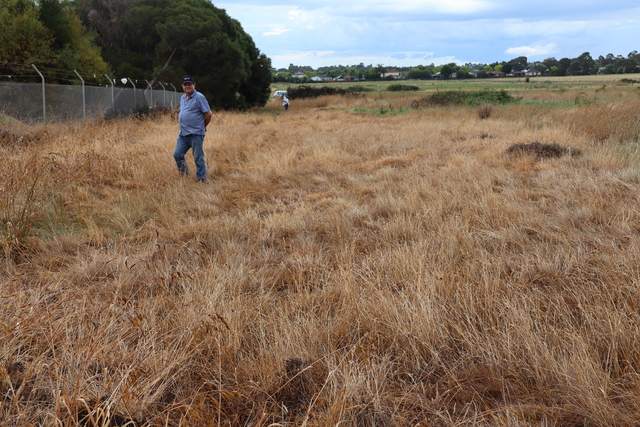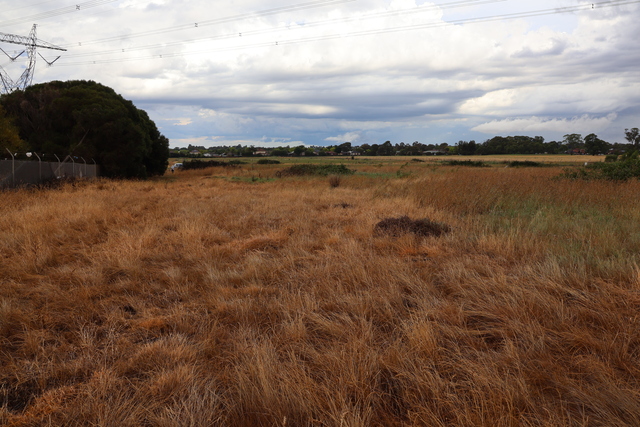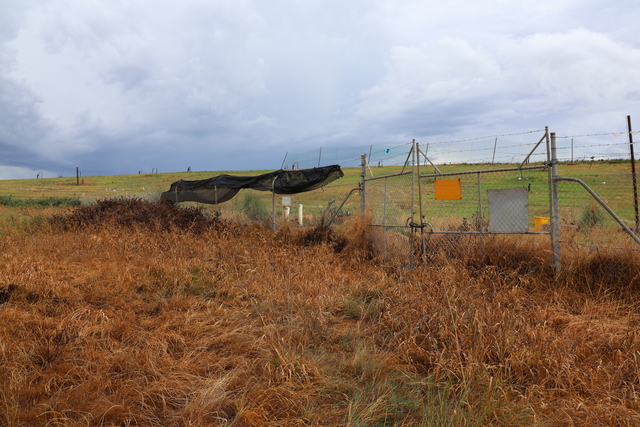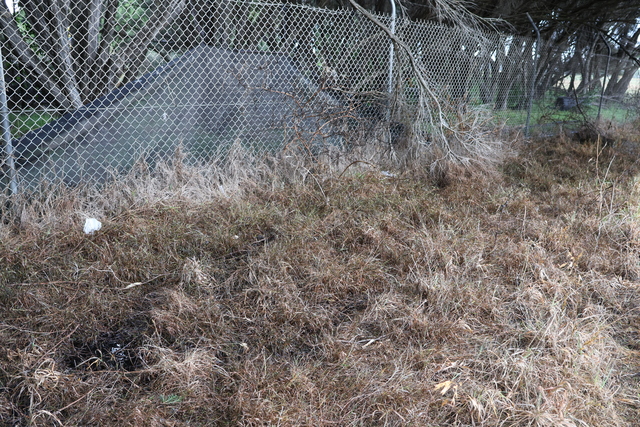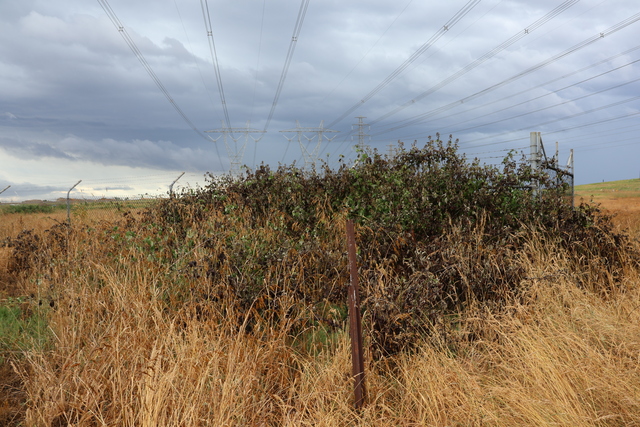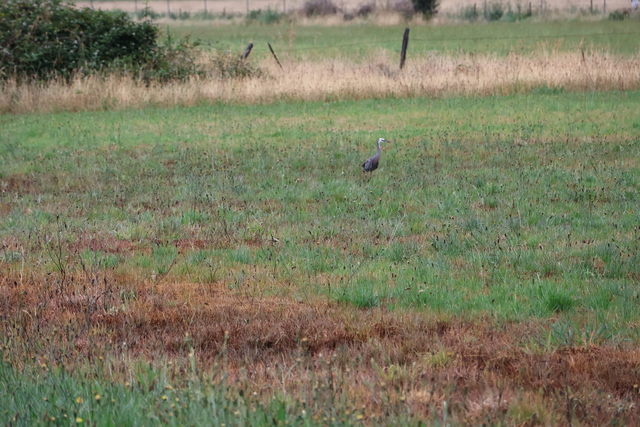An estimated one hectare of vegetation has died after a pipe burst at a South East landfill, leaking leachate into a neighbouring property.
Winsome Anderson’s farmland abuts the east side of the Hallam Road landfill in Hampton Park.
Her son Lindsay Anderson, also the owner of the land, said he was notified by the landfill operator Veolia on Monday 25 November about a burst of a leachate pipeline along the southeast side of the landfill.
The farmer then found out that almost one hectare of the vegetation along the boundary was visibly killed and a stinking smell remained in the air.
“They [Veolia] should have installed the pipework in such a way that it’s contained to their property,” Mr Anderson said.
“What we are doing on our farming land is required to stay within our property boundaries.
“The landfill gas and leachate are exactly the same. It’s meant to stay within their property boundaries.”
Mr Anderson described the leachate leakage smell as “rotten”, “disgusting”, “toxic”, and “a disgrace to the environment”, even as the recent rain had aerated the smell a bit.
Leachate is the liquid that drains from landfills, where it results from rainwater or moisture interacting with decomposing waste.
Leachate can contain a wide variety of contaminants, including organic matter, heavy metals, pathogens, and chemicals, depending on the composition of the waste.
A spokesperson of Veolia said: “On Monday 25 November, our team followed emergency protocols to immediately shut down a pipeline after a broken fitting caused leachate to go into a neighbour’s property.
“We immediately notified EPA Victoria and the neighbour.
“Following the repair of the pipe on the same day, we commenced an urgent investigation into what caused this one-off event, and we began to assess the neighbouring property.
“There was no harm caused to people and preparation works to fully clean up and remediate the affected area are underway.”
The Anderson family brought the landfill operator to the Supreme Court last year, claiming that Veolia breached its operating licence and general environment duty, as the tip’s landfill gas had migrated to their property and exceeded safety benchmarks at the boundary.
In a decision in July this year, the Supreme Court accepted the two breaches.
Mr Anderson said the family was not happy about this latest leachate incident, especially given what had happened in the Supreme Court.
Looking back, the tipping point for the Supreme Court case is that the pollution from the tip hindered the potential horticultural development of the land, according to the Anderson family.
When the family applied to Casey Council for a planning permit to develop horticulture on their land in September 2020, Casey Council required an environmental audit that included the design of an “in-ground pathway intervention structure at the boundary of the landfill to address the changing risks of LFG”, which the family believed would cost “a considerable amount of money…without first having the security of a planning permit”, the court heard last year.
Mr Anderson said before the application for horticultural development in 2020, they used to raise cattle on the land, but the stray rubbish from the landfill was harmful to their cows.
Mr Anderson spoke with Star News in March 2018, saying the rubbish from the landfill had escaped the tip’s six-metre litter screens regularly over the past 18 months.
He said then at least one of his cows had died from ingesting the plastic litter.
Later, the Anderson family stopped raising cattle on the land.
The land has been sitting empty for about four to five years.
Now with the leachate leakage, Mr Anderson said they would be in big trouble if this happened with their cattle.
“This is one of the reasons why we can’t have cattle here. They could go up and smell it and just get crook from it because they don’t know what it is,” he said.
“If they happen to drink it, they’d be very sick.
“Cattle are not stupid either. They probably might want to stay away, but they are inquisitive. They’ll come and sniff and do all sorts of things.”
A spokesperson of the Environmental Protection Authority (EPA) said the incident was reported to EPA late on Monday 25 November and their officers attended the site the next day.
“The spill was contained to the neighbouring property and no local waterways were impacted,” they said.
“The investigation will focus on whether the company breached any of its licence conditions.
“EPA has issued the company with a notice to investigate the impact of the spill and clean up the land.
“Our own investigation will focus on whether the company breached any of its licence conditions.”

